Switches
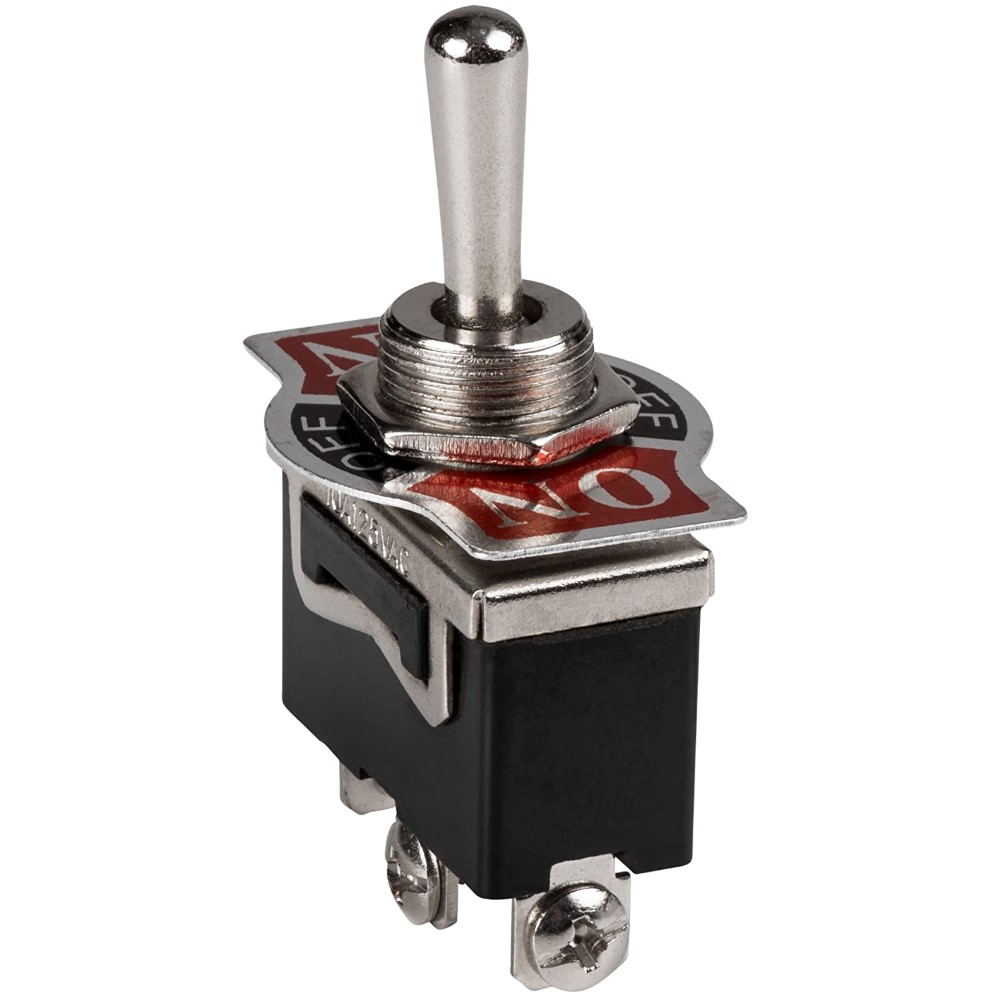
The simplest kind of switch is ON-OFF. This has two terminals, and simply interrupts the electrical path. Such a switch is referred to an SPST, or "single-pole single-throw", because it switches one circuit or "pole" in one way, or "throw". More complex switches are simply combinations of this basic element.
Multi-pole switches -- DP - double pole, 3P - triple pole, etc -- control multiple circuits at once. Multi-throw switches -- DT - double-throw, 3T - triple-throw, etc -- switch the circuit in multiple 'directions'. Thus an SPDT switch selects one circuit between two possibilities. The commonest type of switch in luthiery is DPDT, which selects two circuits between two possibilities.
Toggle-type switches are also classified according to whether they make or break circuits. The commonest switch is luthiery is OFF-ON-OFF or OFF-BOTH-OFF, where selecting either side disconnects that circuit. Common hardware store switches are the opposite: ON-OFF-ON, where neither circuit is connected in the middle position. A third variation is ON-ON-ON. This is typically a DPDT switch where the center position enables one circuit from either side.
Toggle switches are limited to two throws. To get more options, you must resort to a rotary switch. A blade switch is just a rotary switch on its side. Rotary switches can be made in almost any form, from a simple SPST ON-OFF to any degree of multi-pole multi-throw.
Blade Switches
The simplest blade switch is in the Telecaster. It selects between two pickups in parallel mode only, just like an SPDT toggle. A Stratocaster uses a 5-way blade switch SP5T to select between three single pickups and two combinations. ( Note that the third possible combination is not available. ) You can find wiring diagrams online.
Blade switches with multiple poles are known as "Super Switches". These are commonly DP4t, DP5T, and 4P5T. These switches are somewhat bulkier than typical factory switches, and may require some carving under the pickguard to fit, but can otherwise be installed with no external modification. You can do a lot of interesting circuits with
"Super Switches", here are a few:

Here is a 4-way blade switch used as a series/parallel selector for two pickups, as is often done on a Telecaster. The blade switch selects between 4 possible connections for two separate circuits, or DP4T. As shown, the combinations are the middle positions, and the single pickups are at the ends, but the wires can be rearranged to put the combinations in any desired order.
One of my favorite kinds of pot combines a mini rotary pot with a double-pole push-pull switch. You can substitute one of these for any ordinary pot, and add a switch to your circuit with no extra hole. The up or down position of the knob serves as an indicator for the switch. There are many things you can do with this: series/parallel switching for two pickups, auxiliary pickup selector as above, internal series/parallel switching for a single humbucker or 'coil tap' for a pair of humbuckers, phase inversion for a single pickup, simple passive distortion using diodes a la 'Black Ice', select between different tone capacitors, and one of my favorites, dead-battery bypass / manual shutdown for active electronics. Now there's a whole other subject.
Tricks
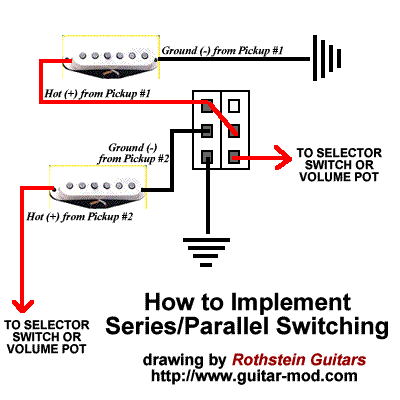
Above is typical wiring to switch two pickups between series and parallel combination. This can be implemented on a push-pull potentiometer, which has a DPDT switch, so that no external modification to the instrument is required. This is especially useful on a Jazz Bass.
This is also useful internally on a 4-wire humbucker, simply consider the two coils as the two pickups in the diagram. Parallel mode gives a sound somewhat thinner sound than coil-tap ( where one coil is simply disconnected ) but it preserves the humbucking qualities of the pickup.
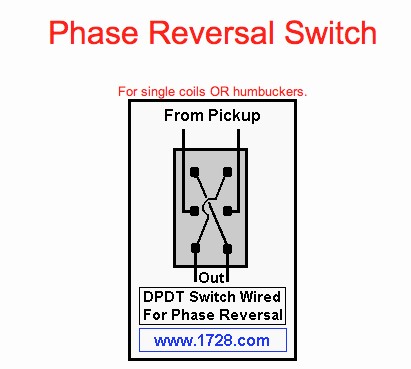
This is another common use for a DPDT switch - phase reversal of a single pickup. If the pickup has a grounded metal shield, that will have to be separated from the coil ground. Phase switching on a two-pickup guitar results in a unique thin sound. Phase switching on a bass does something similar but even more-so, it basically kills the output, and so is not useful.
Getting a Little Crazy
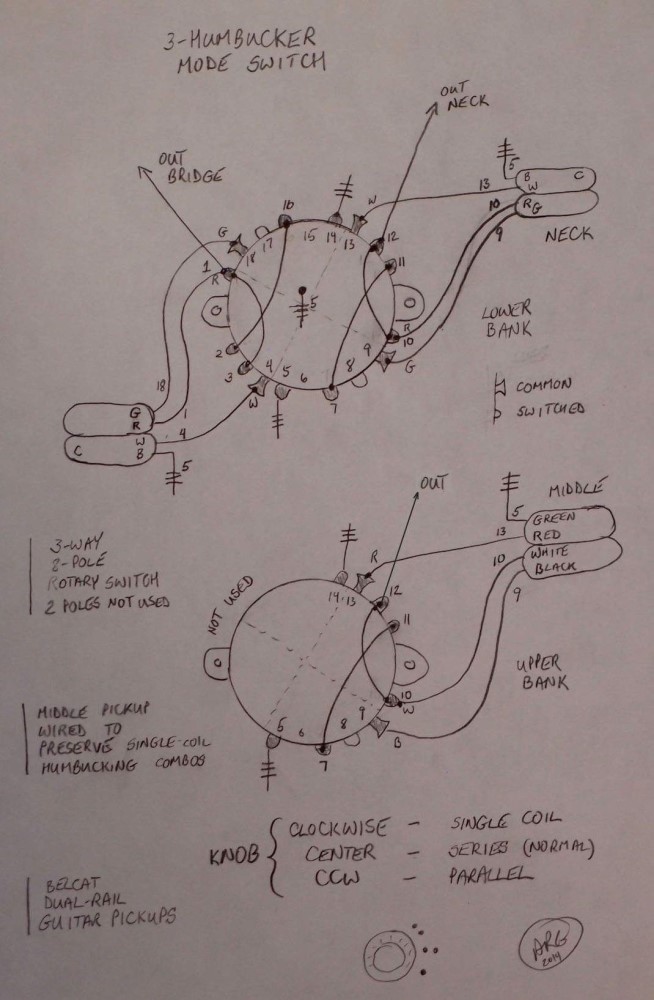
This is the wiring for the humbucker mode switch on my 3-pickup Strat bass, which uses three Strat-sized humbuckers. What this does is switch all three pickups simultaneously between (internal) series, parallel, or single-coil modes. Externally, all three pickups are wired together in parallel with a blade switch like a normal Strat.
Effectively, the switch is eight separate switches on one shaft. It takes two switches per pickup to accomplish the task, leaving two unused. The diagram shows lug-to-lug jumpers 'inside' the switch for clarity, but these jumpers are actually wired around the periphery of the switch, or 'over the top'. All the ground lugs, 5-upper, 5-lower, 14-upper, and 14-lower, are all connected together with the bottom of the switch housing. Connections are made as shown to minimize the number of solder joints on any one lug. The pickups are drawn in whatever orientation avoids drawing crossed wires, in real life, you will go by the color-coding. The 'outs' all go to the blade switch.
So what is the point of this? Fender gave the Stratocaster three knobs, volume, tone, and ... another tone. The first two are standard, but the third is pretty redundant, I consider it to be of little use on a guitar, and none on a bass. That leaves one extra knob then, that I can do whatever I want with. This rotary switch fits right in and gives far more tonal variations than a typical tone-mush control.
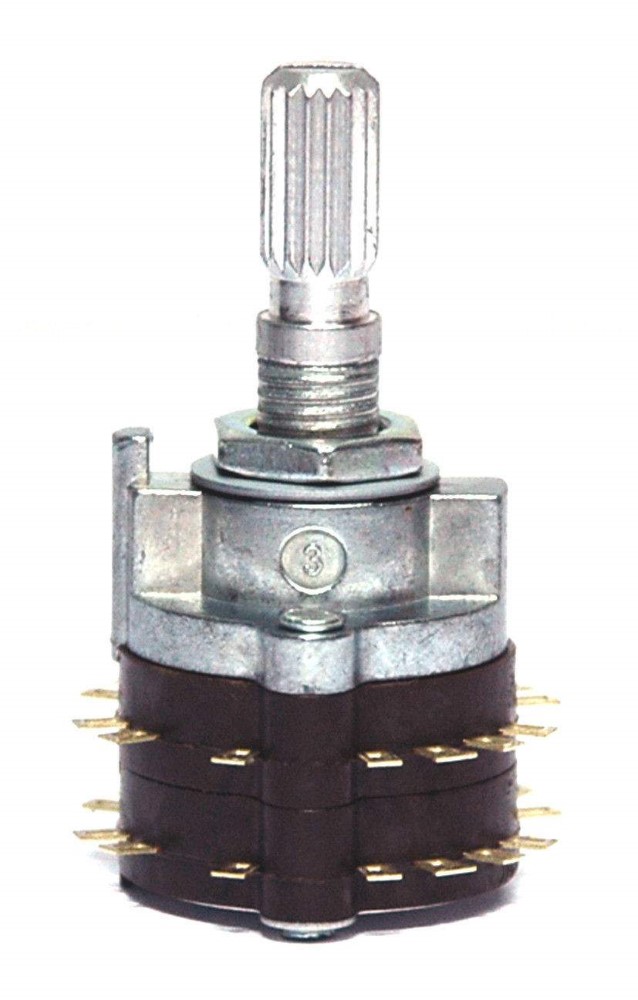
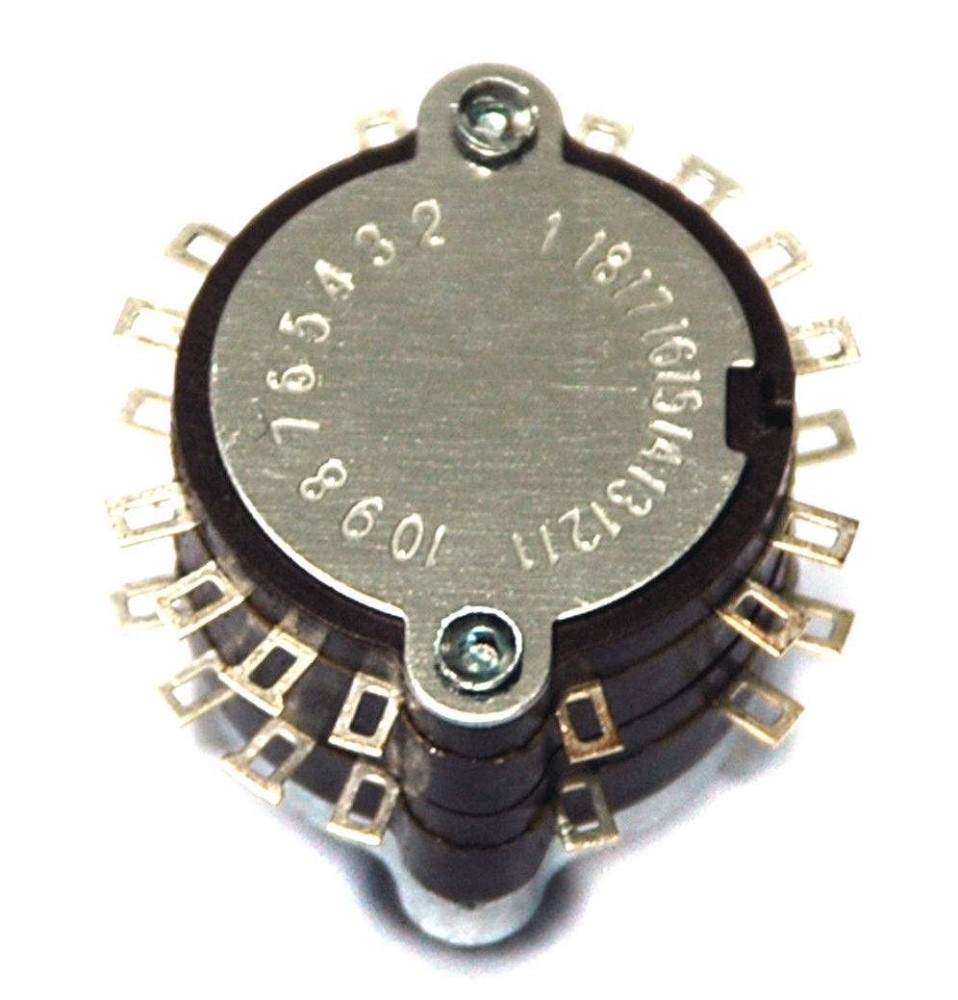
The switch looks like this.
The hard part is finding the switch. At first, I used an open-frame six-pole switch from Hong Kong that proved to be flimsy, difficult to solder, and unreliable. Then I found these closed 8-pole switches from a supplier in Taiwan. These switches have a nice solid feel, are smaller, inexpensiver, and are much easier to solder up. eBay is the place to go. Search for "rotary switch 8-pole 3-position" or "rotary switch 6-pole 3-position". The only problem with these switches is that the shaft is too tall, but that is easily fixed with a Dremel.
With the standard 5-way blade switch, this gives 15 different pickup combinations, of which 12 are humbucking. You can get anything from a thin reedy Jazz sound to a big fat Precision sound, without ever touching the 'tone' knob. With the addition of a push-pull switch on the volume or tone knob, you can add six more combinations. Someday I am going to find out what this wiring would do in a guitar ( I mean, a Piccolo Bass VI. )
Why aren't factory guitars wired like this? Because it is not easy. Look at all the pickup leads and solder joints. All of that can be screwed up or go bad later. That means rejects, re-works, and warranty issues. Compare all this mess to the simplicity of a standard Stratocaster with three single-coils and that useless extra tone pot. But you can certainly do this at home, and I've already done the hardest part for you - you have the diagram.
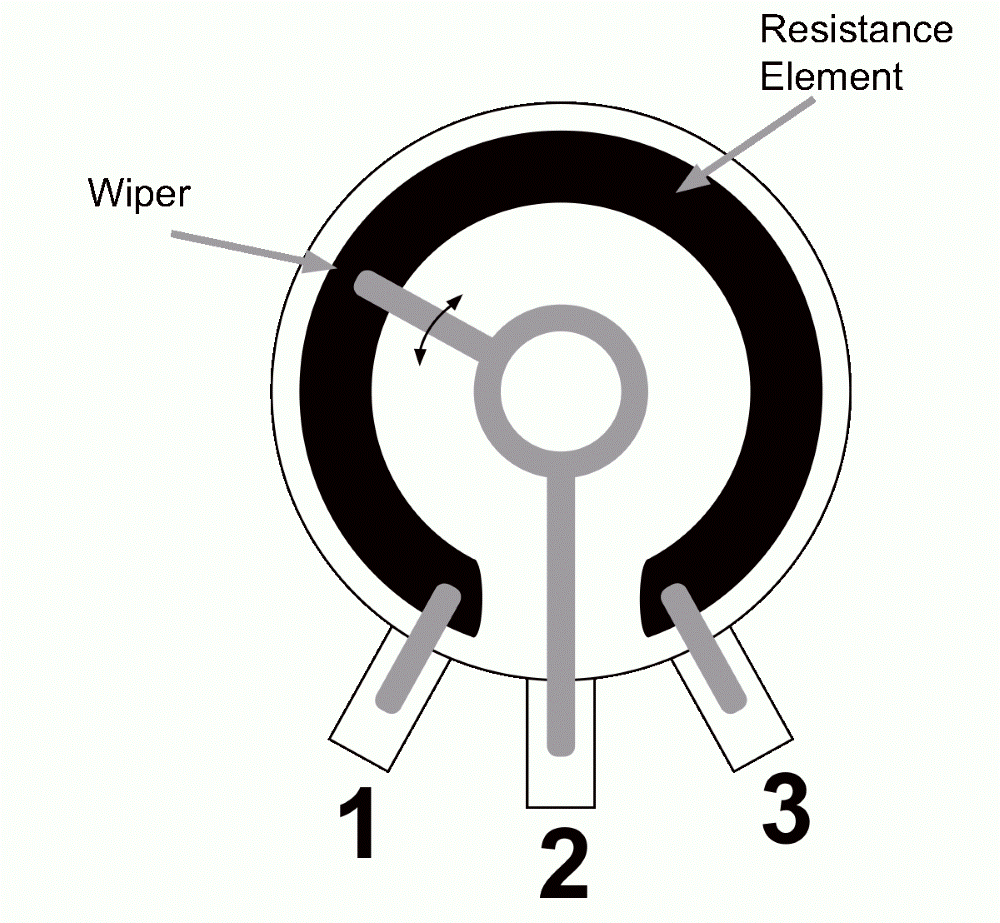




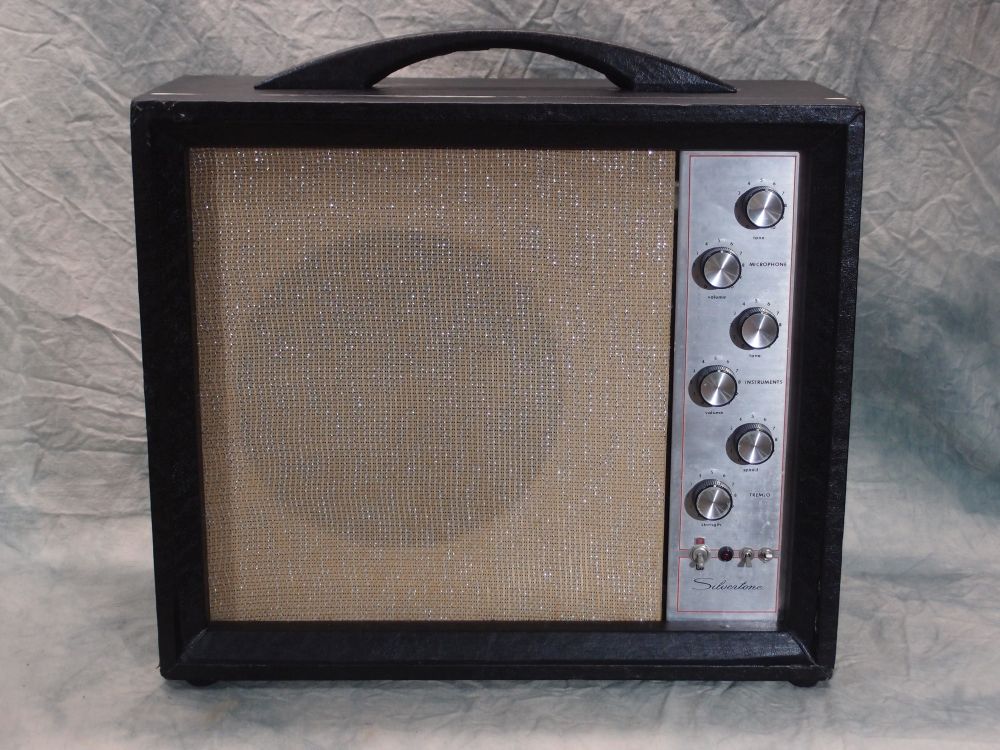
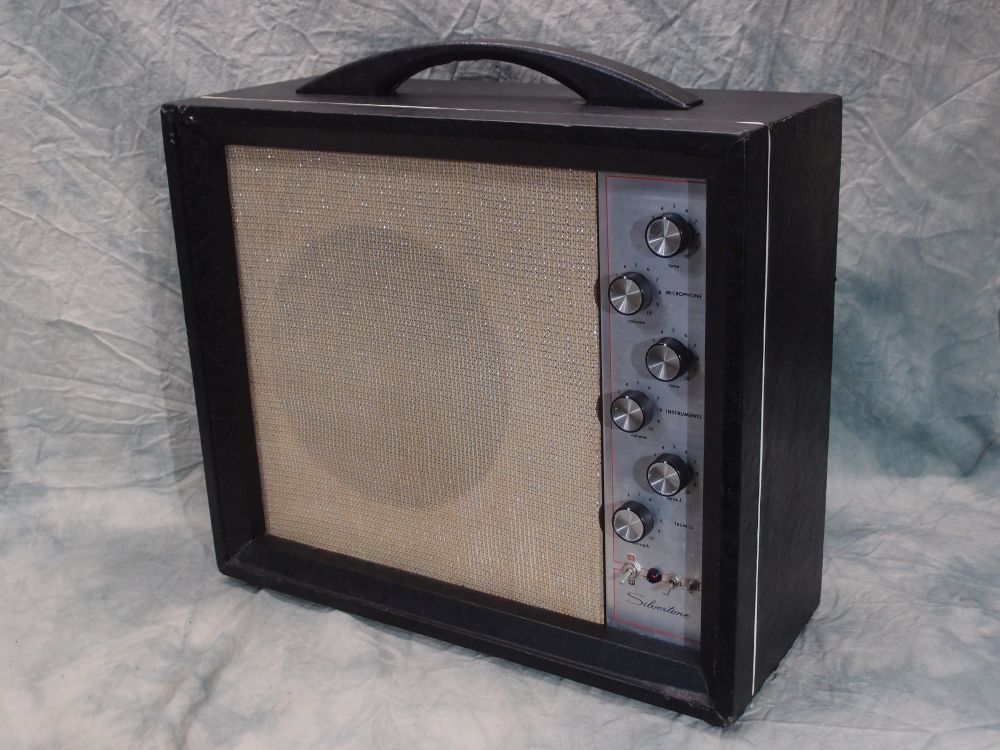
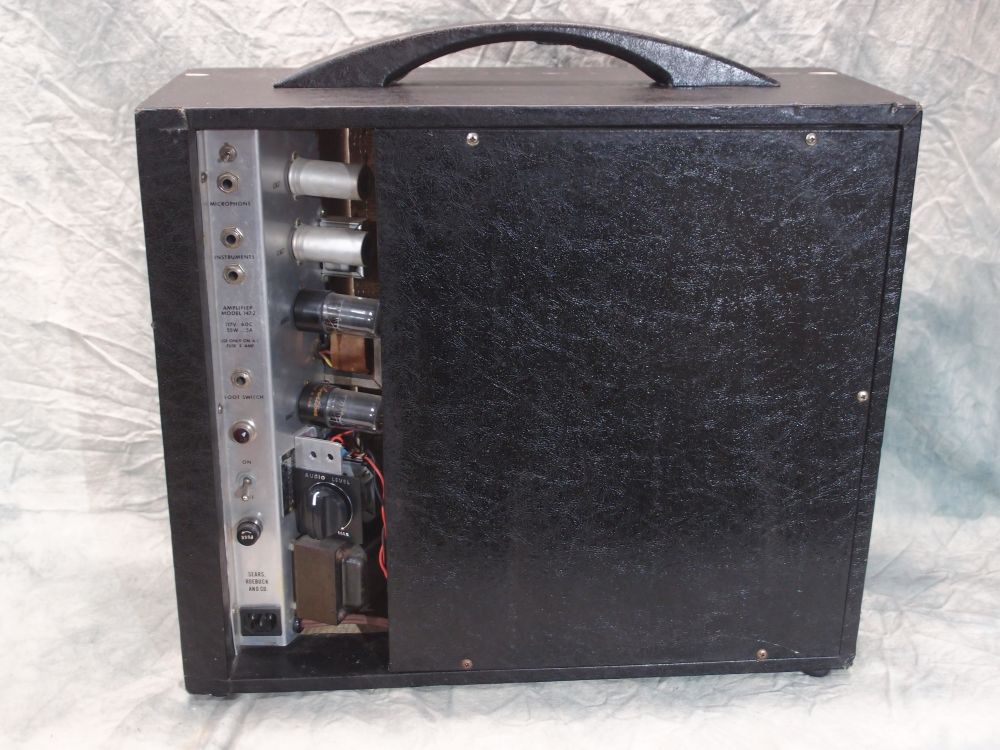
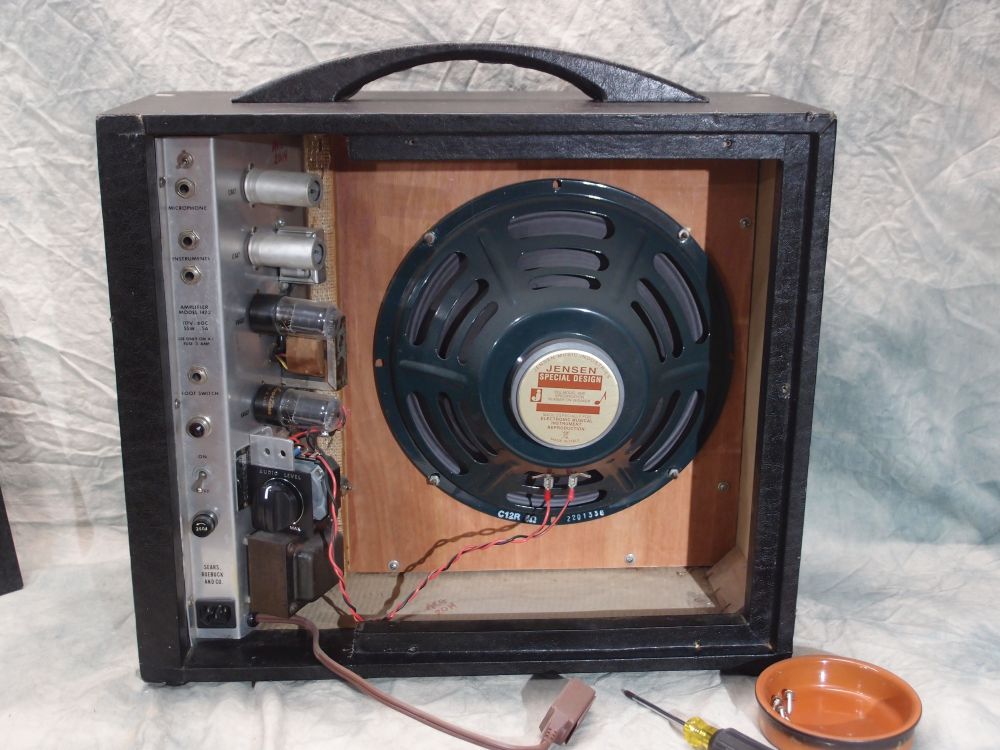
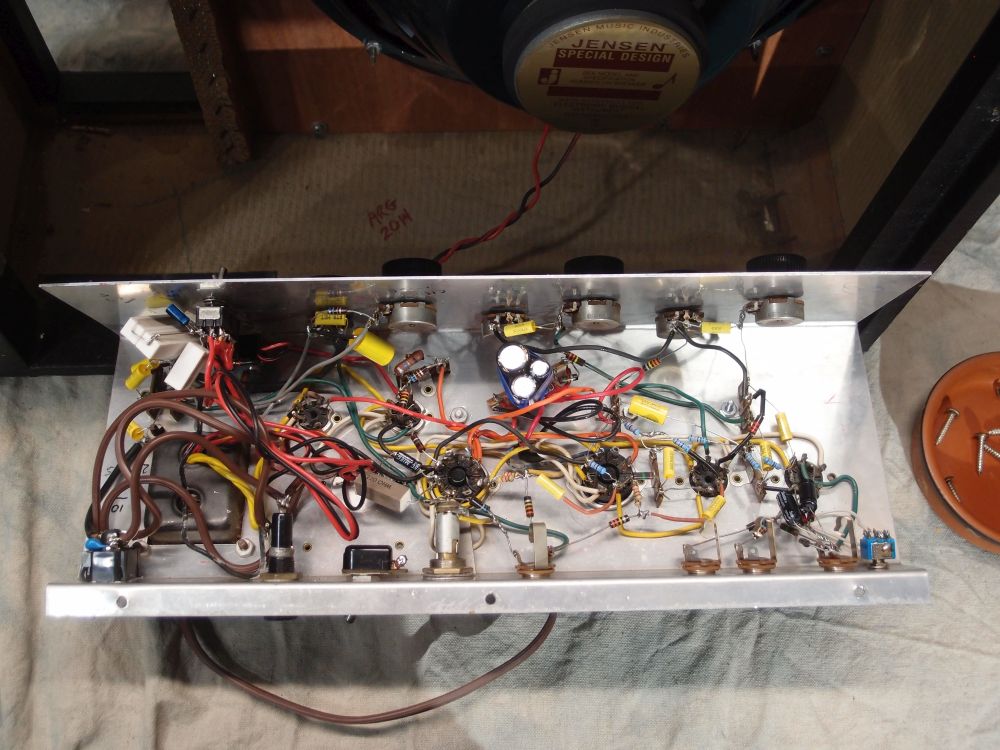
Questions or Inquiries?
Just want to say Hello? Sign the .